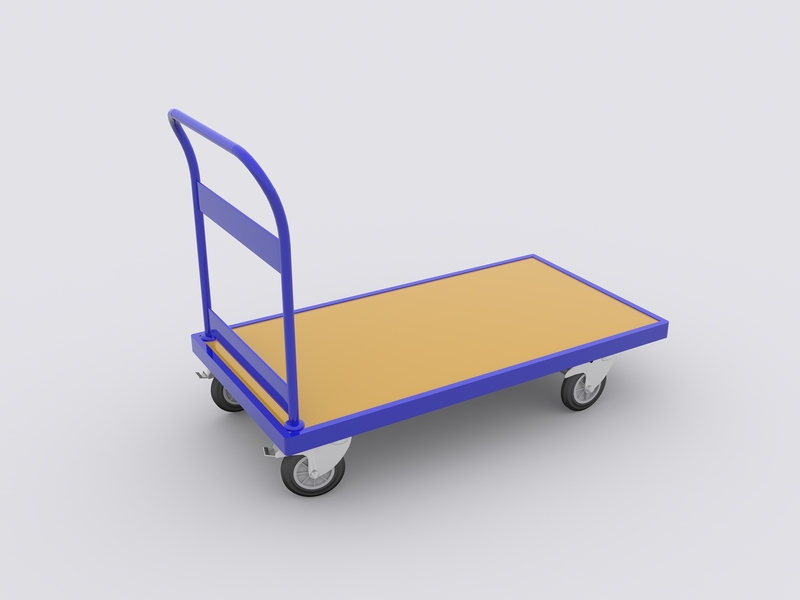Kinetic Lifting: Safe Heavy Lifting
Posted on 28/11/2024
Heavy lifting is an essential part of numerous industries, from construction and warehousing to healthcare and transportation. Despite its significance, improper lifting techniques can lead to severe injuries, ranging from minor muscle strains to debilitating spinal injuries. Understanding and implementing safe lifting practices is vital for both individual safety and organizational efficiency. This comprehensive article delves into the principles of kinetic lifting and how it offers a safe and effective solution for heavy lifting tasks.
Understanding Kinetic Lifting
Kinetic lifting, also referred to as kinetic handling, is a technique that focuses on leveraging the body's natural mechanics to move heavy objects safely. This method is rooted in biomechanics, the study of the mechanical laws relating to the movement or structure of living organisms. By aligning our movements with these principles, we can minimize the risk of injury and maximize efficiency.

The Importance of Proper Lifting Techniques
Improper lifting techniques are a leading cause of workplace injuries. The Occupational Safety and Health Administration (OSHA) estimates that lifting-related injuries account for nearly one-third of all reported workplace injuries. These injuries often result in significant direct costs, such as medical expenses, and indirect costs, including productivity losses and worker's compensation claims.
Adopting proper lifting techniques can drastically reduce these risks. By following the principles of kinetic lifting, workers can distribute the strain more evenly across their bodies, thus reducing the likelihood of injury.
Key Principles of Kinetic Lifting
Kinetic lifting involves several key principles that are crucial for safe heavy lifting. These principles include:
Planning the Lift
Before lifting an object, it is essential to plan the lift. This involves assessing the weight and size of the object, identifying any obstacles, and determining the best route to carry the object. Planning helps prevent sudden movements that could lead to injury.
Maintaining a Neutral Spine
One of the most critical aspects of kinetic lifting is maintaining a neutral spine. This position involves keeping the back in its natural curve while bending at the hips and knees. A neutral spine helps distribute the load evenly and minimizes stress on the vertebrae and intervertebral discs.
Engaging the Core
Engaging the core muscles (the muscles around the abdomen and lower back) provides additional support to the spine during lifting. A strong core helps stabilize the body and reduces the risk of injury.
Using Leg Muscles
When lifting, the primary force should come from the leg muscles rather than the back. Bending at the hips and knees allows the large muscles in the legs to carry most of the load, reducing strain on the smaller muscles in the back.
Keeping the Load Close
Holding the load as close to the body as possible decreases the amount of leverage exerted on the spine. The farther an object is held from the body, the greater the strain on the lower back and shoulders.
Steps for Safe Kinetic Lifting
To ensure safe lifting practices, follow these step-by-step instructions:
Step 1: Assess the Load
Determine the weight and stability of the object you need to lift. If it is too heavy or awkward to handle alone, seek help or use mechanical aids like dollies or forklifts.
Step 2: Position Yourself
Stand close to the object with your feet shoulder-width apart, providing a stable base of support. Ensure your footing is secure to prevent slipping.
Step 3: Bend at the Hips and Knees
Lower yourself to the level of the object by bending at the hips and knees, not at the waist. Keep your back straight and maintain the natural curve of your spine.
Step 4: Grip the Load Securely
Use both hands to grip the object securely. Ensure your grip is firm but comfortable to avoid slipping.
Step 5: Engage Your Core
Before lifting, tighten your core muscles to provide additional support to your spine.
Step 6: Lift with Your Legs
Straighten your hips and knees to lift the object, using the powerful muscles in your legs. Keep the object close to your body and maintain a neutral spine position.
Step 7: Move Smoothly
Avoid sudden, jerky movements while carrying the load. Move smoothly and deliberately to maintain balance and control.
Step 8: Lowering the Load
When placing the object down, reverse the lifting process. Lower yourself by bending at the hips and knees, keeping the back straight and the object close to your body.
The Role of Training in Kinetic Lifting
Training is crucial for the successful implementation of kinetic lifting techniques. Employers should prioritize comprehensive training programs to educate workers on safe lifting practices. These programs should cover the following aspects:
Hands-On Practice
Hands-on training allows workers to practice proper lifting techniques under the guidance of experienced instructors. This practical approach helps reinforce the principles of kinetic lifting.
Ergonomic Assessments
Ergonomic assessments of the workplace can identify potential hazards and recommend modifications to reduce the risk of injury. For example, adjusting the height of work surfaces and ensuring adequate space for movement can significantly improve safety.
Regular Refresher Courses
Regular refresher courses help workers stay updated on best practices and reinforce their knowledge of safe lifting techniques.

Using Assistive Devices
While kinetic lifting techniques are highly effective, there are situations where assistive devices are necessary. Mechanical aids such as forklifts, hand trucks, pallet jacks, and conveyor belts can significantly reduce the physical strain involved in lifting and carrying heavy objects.
Forklifts and Pallet Jacks
Forklifts and pallet jacks are invaluable for moving large, heavy loads over distances. Proper training and certification are essential for operating these machines safely.
Hand Trucks
Hand trucks, or dollies, are suitable for smaller, manageable loads. They allow workers to transport heavy objects with minimal effort, reducing the risk of injury.
Conveyor Belts
In manufacturing and distribution settings, conveyor belts can facilitate the movement of goods along production lines. This minimizes manual handling and enhances efficiency.
Conclusion
Kinetic lifting is an essential practice for anyone involved in heavy lifting tasks. By understanding and applying the principles of kinetic lifting, individuals can significantly reduce the risk of injury and improve overall efficiency. Key principles such as maintaining a neutral spine, engaging the core, and using leg muscles are fundamental to safe lifting. Additionally, comprehensive training programs and the use of assistive devices can further enhance safety and productivity in the workplace. Prioritizing safe lifting practices not only protects workers but also contributes to a healthier, more productive work environment.







